|
|
|
|
|
|
Service history of the Agusta-Bell AB-204B
with the MLD
The Bell model 204 UH-1 helicopter first flew in 1956. It had a two
bladed rotor system and was originally powered by a single Lycoming T53
engine with 700 - 780 hp. It was a real work horse and was extensively
used in Vietnam by the US forces and nicknamed "huey". Many versions
were developed with stretched fuselages, more powerful single T53
engines (up to 1400 hp), even twin engines and various systems. Today
the latest version being build, is the UH-1Z fore the United States
Marine Corps.
Over 17,000 helicopters of this UH-1 family have been manufactured today.
Not only by Bell as it was also license-built in Italy by Agusta
(Agusta-Bell AB-204) and in Japan by Fuji Heavy Industries (Fuji-Bell
204B-2).
|
Helicopter Force
|
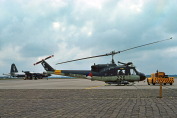 |
|
|
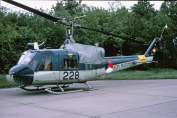 |
Delivery to the Royal Netherlands Navy
(MLD)
In 1961 seven Agusta-Bell AB-204B helicopters were bought to form a
second helicopter squadron at Valkenburg NAS with detachments at Hato
and Biak. The helicopters were delivered by Agusta who built the type in
license. Compared to the original machine they differed in having an
Italian Gnome engine.
These helicopters resaved the designation (I) UH-1 during their service
with the Dutch Naval Air service (Marine Luchtvaart Dienst) although
they were Augusta build AB-104Bís. The Dutch Naval Air service has a
history of using a different type designation for its aircraft.
The first helicopter was delivered to Valkenburg NAS in June 1962 and
the last in May 1963. A further Agusta-Bell AB-204B was acquired in 1969
as a replacement for the crashed Agusta AB 204ís 223 and 224, resaving
the serial 228, originally a civil aircraft (I-MUNI).
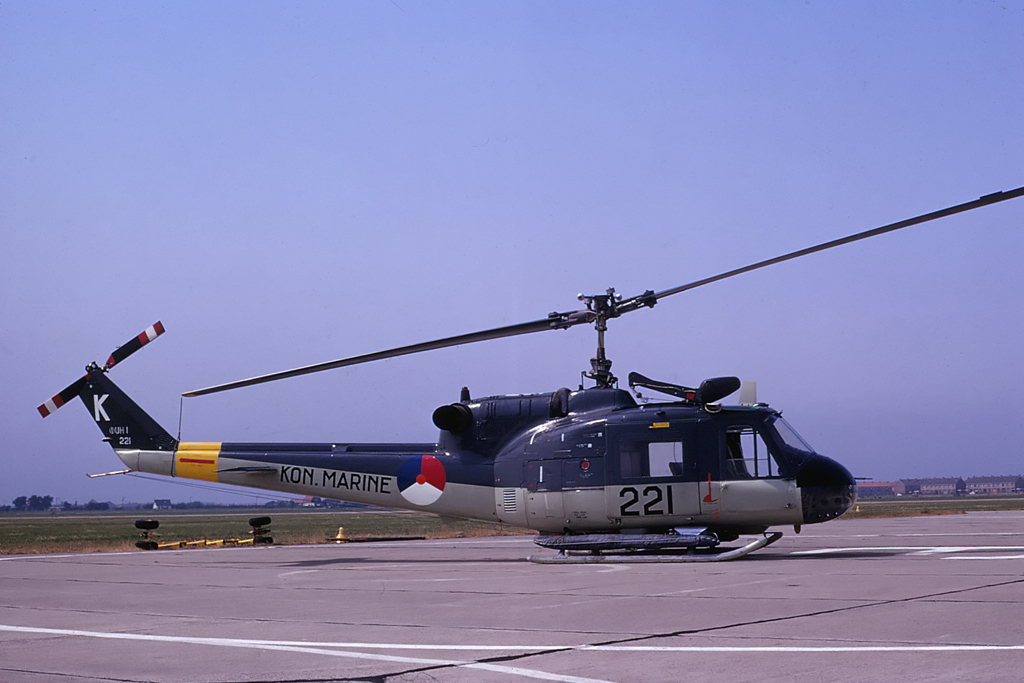
|
|
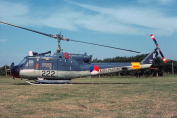 |
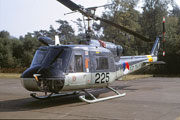 |
|
|
Operational history
The Dutch Naval Air service used the nine Agusta-Bell AB-204B from 1962
until 1978 within 7 squadron which had just reformed at Valkenburg NAS.
Some of the delivered Agusta-Bell AB-204B where on transport for use in
the then Dutch New-Guinea at the moment that the governance was
transferred to the United Nations, with the helicopters no longer needed
in New-Guinea they were returned to the Netherlands to be stationed on
Valkenburg NAS.
The Agusta-Bell AB-204B was mainly used for transport services and
occasionally for SAR-tasks. The undercarriage could be replaced with a
floatation gear, but this configuration was rarely used. Two of the
helicopters were in use within 1 squadron based at Hato until its
disbandment in 1974, as a detachment of squadron.
The phase-out of the Agusta-Bell AB-204B began in late September 1977,
when first helicopters were delivered to Valkenburg for storage, as its
replacement the Westland Lynx entered service with the Dutch Naval Air
service in 1977.
.
|
|
Squadrons equipped with the Agusta-Bell
AB-204B |
|
1 Squadron
1 Squadron MLD was formed from the Gevechtsvliegopleiding (GVO) on 22
March 1949, taking over that unit's Fairey Firefly F.1 aircraft at
Valkenburg NAS. On 25 January 1952, the squadron arrived at Hato, Dutch
Antilles the aircraft carrier Karel Doorman, taking up responsibility
for the air defence of the islands.
Augmented by a small number of Fairey Firefly T.2 trainers, the F.1s
were joined by a flight of Hawker Sea Furies in 1951, and re-equipped
with Fairey Firefly FR.4 and FR.5 aircraft in 1955, this giving way to
the Grumman TBM Avenger in 1957.
Two Harvard trainers were added to strength during 1959, and in December
1960 the first of seventeen replacements Grumman CS-2A Trackers arrived
after overhaul in Canada.
Marked with the fin code 'H', as were their predecessors, the Grumman
Trackers continued the principal task of operational training, plus
secondary duties of ground support, anti-submarine and SAR until late
1969, when they were returned to Holland for scrapping, and replaced by
eleven Grumman S-2N Trackers. During this period, the squadron
additionally operated two Agusta-Bell AB-204B helicopters on loan from 7
Squadron.
Eventually, 1 Squadron disbanded on 1 August 1974, changing its name to
'Detachment MLD', and shortly afterwards its Grumman S-2N Trackers were
scrapped or returned to the US Navy and replaced by the 'Detachment' of
Lockheed Neptuneís
 |
|
7 Squadron
On 2 December 1949, the Oostelijk Verkennings en Transport Squadron (OVTS)
at Morokrembagan initiated the transfer of six Catalinaís to New Guinea,
where they founded 7 Squadron at Biak on the 23rd of the month. The
Catalinaís were employed for maritime patrol until 1 February 1951, when
7 Squadron disbanded and returned its aircraft to the parent unit, which
by that time had been redesignated 321 Squadron and had also moved to
Biak.
Re-equipped with Fairley Firefly FR.4 and FR.5s, the squadron was
reborn, again at Biak, on 4 July 1955, taking responsibility for naval
reconnaissance and target towing in the area until the autumn of 1961,
when the final fourteen Fairley Fireflies were abandoned. 7 Squadron was
disbanded on 15 January 1962, by which time the first Lockheed Neptuneís
of 321 Squadron had arrived on the island to take over from the
previously based Mariners and Fireflies.
On 15 October 1962, 7 Squadron became the second MLD helicopter unit,
when it formed with the first four of eight Italian-built Agusta-Bell
AB-204B on order at Valkenburg. Detached flights of two helicopters
where planned Biak and Hato, and the squadron increased strength by
absorbing the larger SH-34Js of 8 Squadron late 1968, prior to the last
of these being withdrawn from SAR service in 1972.
In late 1973 the unit moved to de Kooij, alongside 860 squadron.
Phase-out of the Agusta-Bell AB-204B began in late September 1977, when
first helicopters were delivered to Valkenburg for storage. At the same
time conversion to the Westland UH-14A Lynx started in 1977 later
augmented and then replaced by the Westland SH-14 Lynx variant. There it
was absorbed in MARHELI and is operated the Westland SH-14D Lynx. At the
moment 7 Squadron provides crew training in NHI NH90 and also performs
tests and evaluations for the helicopter and its systems from within MARHELI.

|
|
End of the line
|
|
|
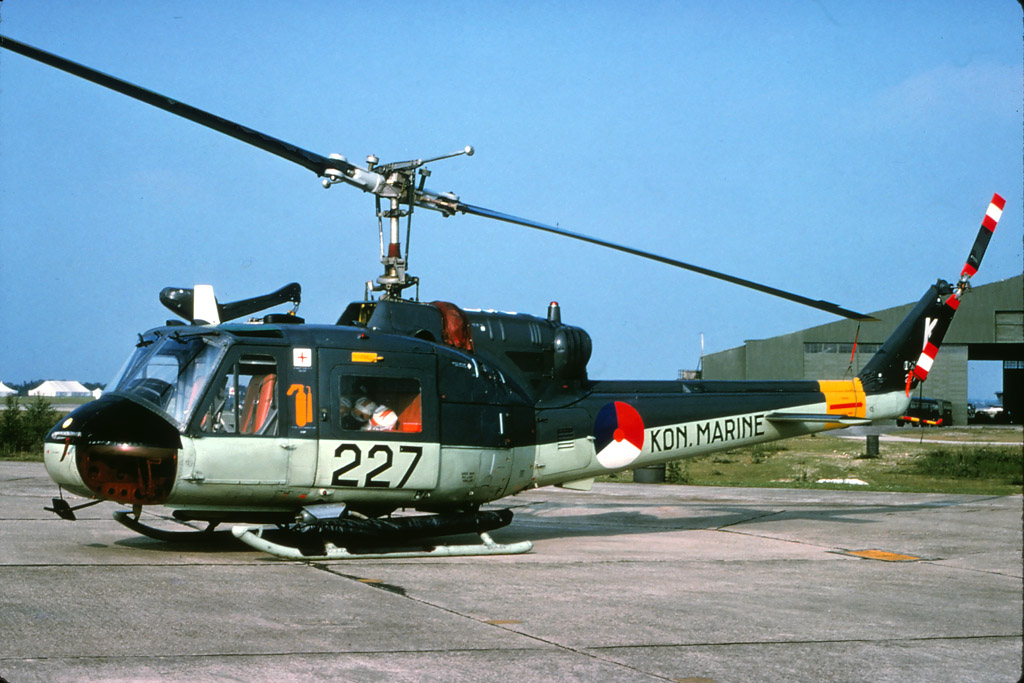 |
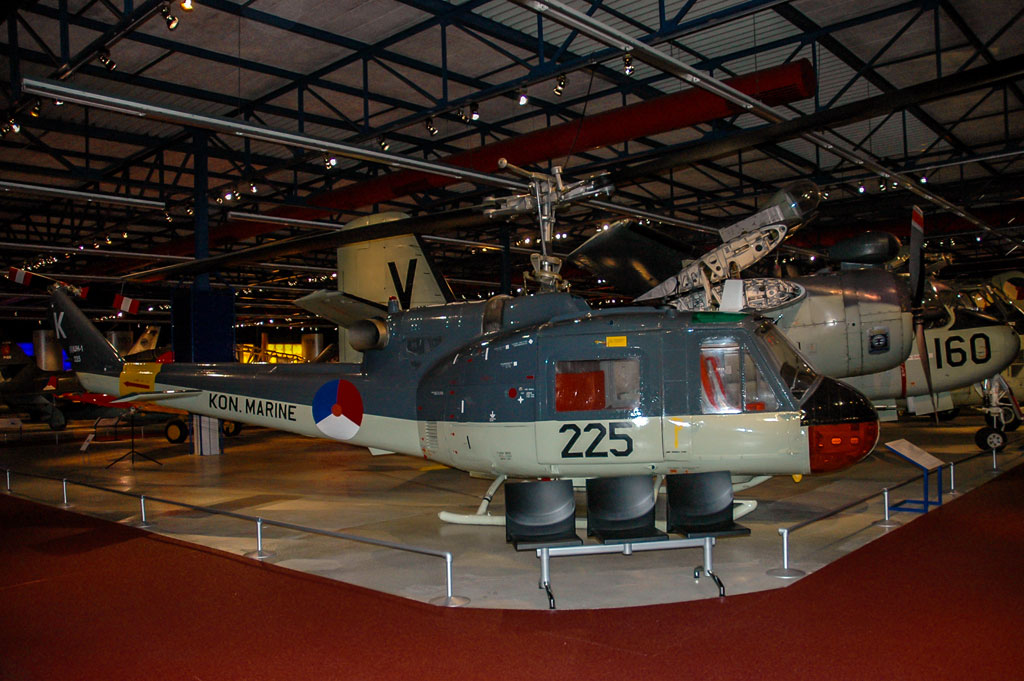 |
End of the line
In March 1978 all the Agusta-Bell AB-204Bís were withdrawn from service
and sold to Sky Controls Inc., California. The aircraft were never used
in the US, because of the Italian engines they were equipped with. After
several years they ended up in Sweden, where some of them were given to
a Swedish museum and others where used for instructional purposes.
At the end of the nineties Agusta-Bell AB-204B 220 and 225 where
returned to the Netherlands, the helicopters still had the original
Dutch paint scheme applied. After being overhauled 225 went on display
at the Militaire Luchtvaart Museum at Soesterberg and 220 went on
display as gate guard at Naval Air Station 'De Kooy".
A further two Agusta-Bell AB-204B 221 and 227 where acquired in 2006 by
Classic Aircraft Foundation and transported to the Netherlands with the
aim to restore 227 to flying condition
|
|
Serial |
Type |
CN |
Unit |
Status |
Comment |
PreviousID |
|
220 |
AB-204B |
3010 |
|
Preserved |
gate guard de Kooy NAS |
|
|
221 |
AB-204B |
3012 |
|
Stored |
Anna Paulowna |
|
|
222 |
AB-204B |
3014 |
|
Instr. Airframe |
Halmstad |
|
|
223 |
AB-204B |
3016 |
7sq |
w/0 04-05-1964 |
|
|
|
224 |
AB-204B |
3020 |
7sq |
w/o 01-04-1969 |
|
|
|
225 |
AB-204B |
3023 |
|
Preserved |
Soesterberg museum |
|
|
226 |
AB-204B |
3032 |
|
Preserved |
Goteborg Save Aerosum museum |
|
227 |
AB-204B |
3035 |
|
To Civil |
Anna Paulowna as PH-UEY |
|
|
228 |
AB-204B |
3017 |
|
Instr. Airframe |
Vasteras |
I-MUNI |
|
|
|
|
 |
|
|